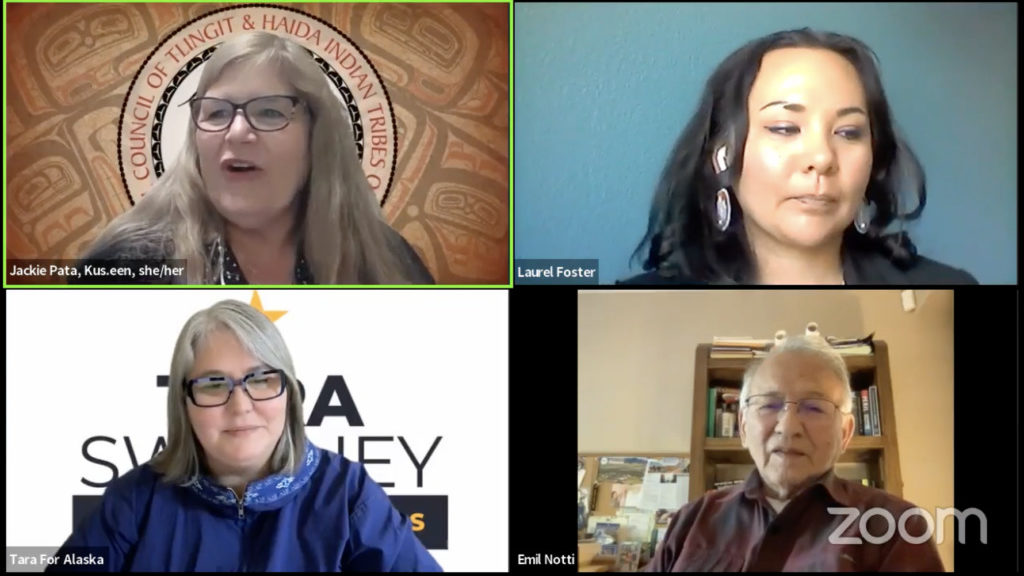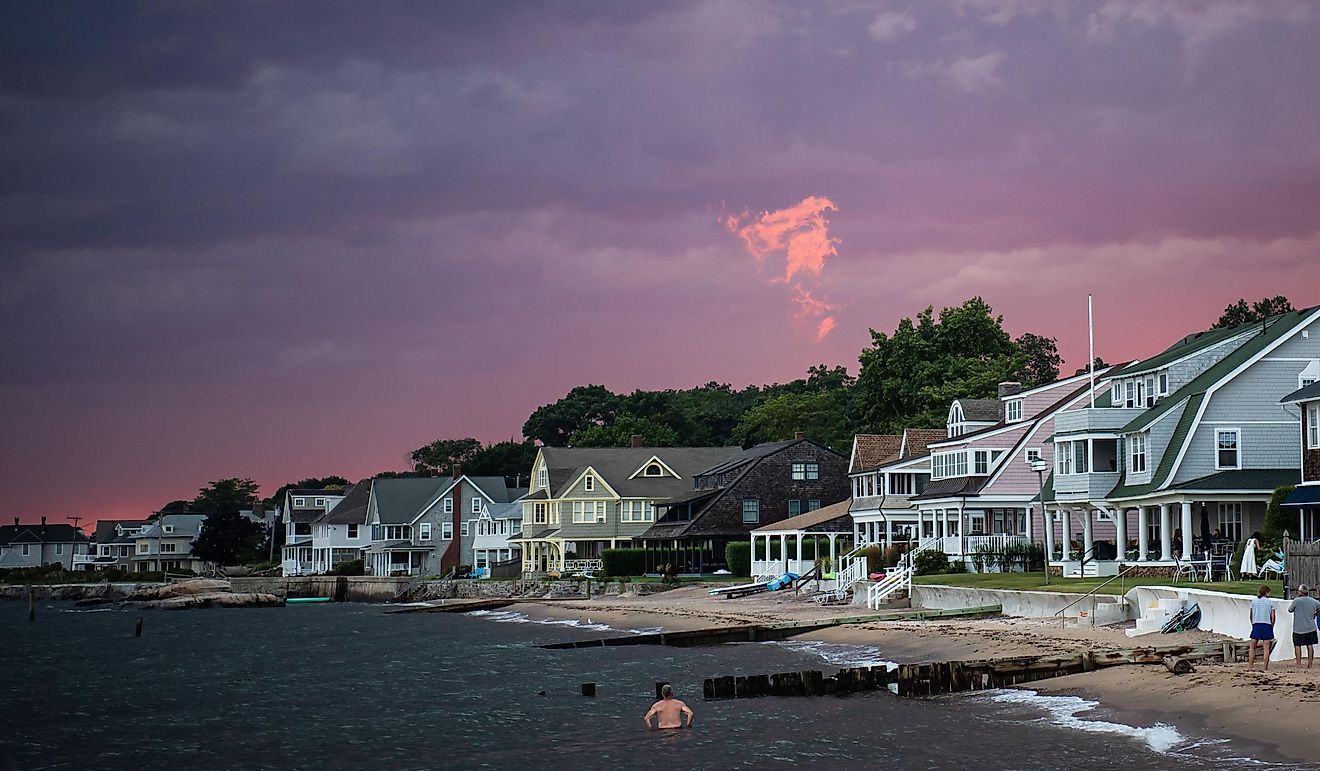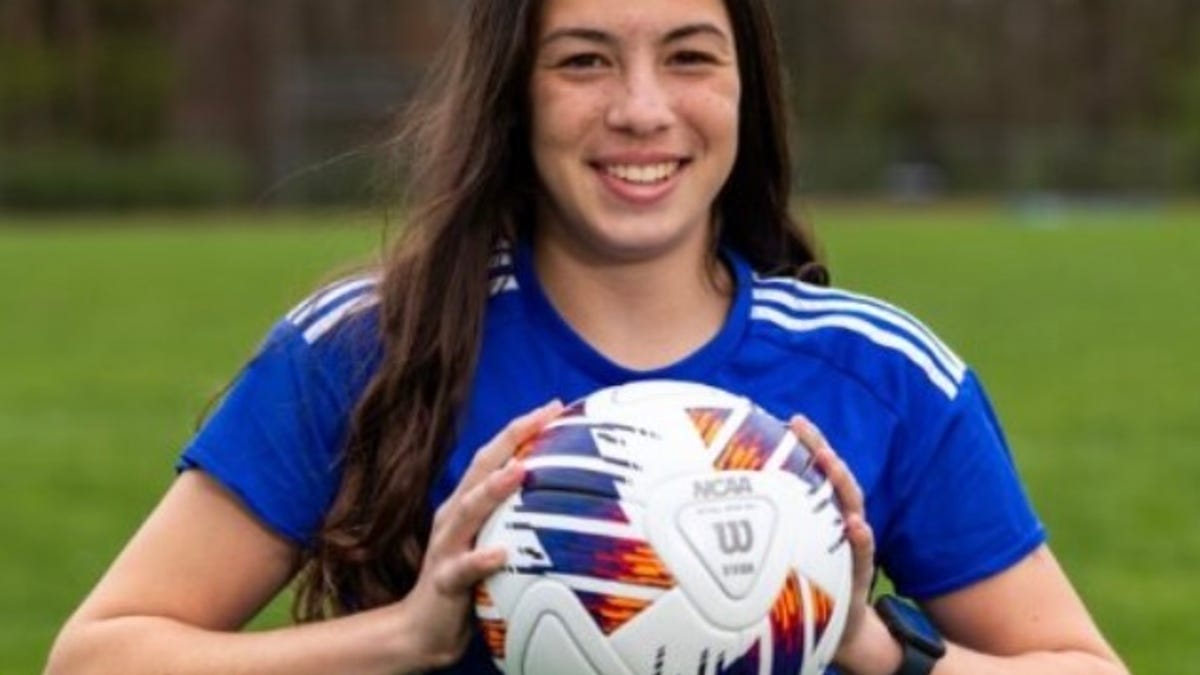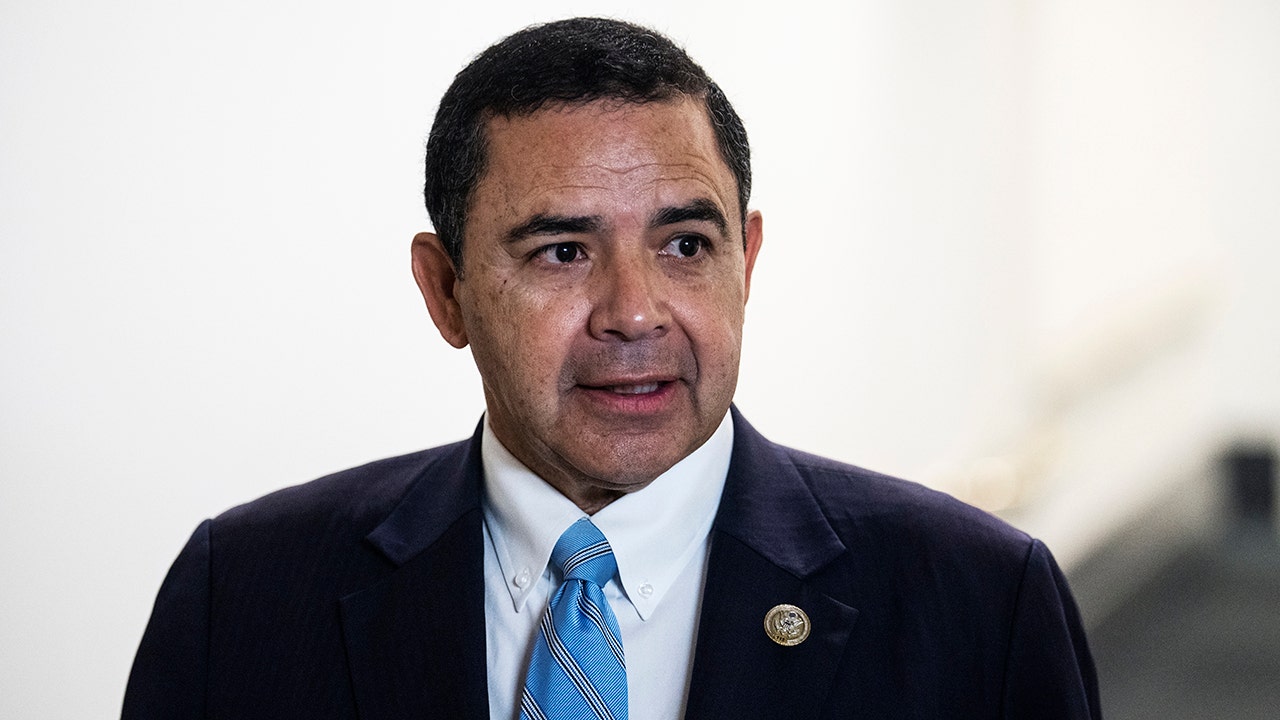Alaska
Alaska Native vision for the future: Self determination • Alaska Beacon
ANCHORAGE, Alaska — Indigenous leaders want a seat at the table and to be seen and heard. “Nothing about us without us.”
That’s the message Indigenous leaders shared at an Arctic symposium that organizers say brought in participants from 30 countries. Six Inupiaq, Tlingit and Athabascan leaders kicked off “Arctic Encounter 2024” with a plenary session entitled “Northern Indigenous Leadership: Our Future, Our Vision for Success.” Organizers say the three-day symposium drew about a thousand leaders in diplomacy, research, science, the military and business to the Dena’ina Convention Center in Anchorage.
Kasannaaluk Marie Greene, Inupiaq, is president of the Inuit Circumpolar Council, which is made up of members from Greenland, Canada, Russia and the United States. She told an audience of about 150 people her goal is to continue to fulfill the vision of the council’s founder, Eben Hopson, Inupiaq: “to have our Inupiat people at the international level come together to strengthen our unity, to work together in harmony as we come together and address our concerns, our common concerns, our challenges, and what we need to be doing going forward as we continue to build that unity.”
Greene said Hopson expressed at the founding meeting of ICC in 1977 “the need to … to be promoting our language, our culture, our customers, who we are as Inuit and to promote and work with our governments, to ensure that we have the policies, long-term policies in place and to also address our interests at the international level.”
She added that Hopson challenged “us to do what we can to protect our homeland, to protect the Arctic and that’s a privilege being in this role that I have.”
She said communications need to be honest and respectful toward governments, but “we have got to be expressing our concerns about the change of the climate that we’re now experiencing in the Arctic.”
Apagzuk Roy Agloinga, Inupiaq, is president and CEO of the First Alaskans Institute, an Alaska Native policy and advocacy nonprofit. “(Our) people have always lived in this land,” he said. “We have a passionate and deep connection to every place. And the fact that we are able to make decisions about education, about the economy, about any kind of policy that impacts us, is really critical.”
Agloinga said the institute plans to build on the training and education previous First Alaskans leaders have provided on the importance of subsistence, an effort he said that helped lead to the appointment of three subsistence users to the federal Subsistence Board. “One of the things that we’ve done, of course, is a lot of advocacy around protecting our ways of life and have such an amazing working group with about 200 people who are from across the state.” That work was brought to the forefront, he said, “so that we can really work closely with our communities to identify ways so that they can continue protecting subsistence… that will always continue to be a major priority for us, and we want to make sure that our community understands what the issues are and how to move forward.”
Agloinga said youth leadership is also a key area for the Institute. “Our youth are pretty amazing and the youth that participated in (our) Elders and Youth conference really already show tremendous leadership in their region. We want to make sure that those young people are able to get as much support as they can, as much education as they can, as much knowledge as they can about the issues that are so important to us as Native people in Alaska so that they can continue the fight for self-determination and really understand what that means.”
Aaron Schutt, Koyukon Athabascan, is CEO of the Alaska Native regional corporation Doyon Limited. He told the audience the Doyon region is about the size of the country of France, and home to about 40 communities, and 25 village corporations. Doyon has about 20,500 shareholders.
“We were able to select and retain about 12.2 million acres within our very large homeland,” Schutt said. “We share about 4 million of those acres with our village corporations where they own the surface and we own the subsurface and we have about 8.2 million acres that we own outright like all the other Native companies. Our job is to make money, train and employ our shareholders, and then, most importantly, steward our land base. 
“We have our land. We have our people. We have to have economic success in order for our people to thrive, in order for us to steward the land. The federal government doesn’t give us any money…We have trespass, fire, gravel, wildlife, all these issues that are very important to our people, that we have economic success in order to take on all of those issues.” He quoted a former chief who would often say, “We’re doing well; we can do better.”
Dr. Pearl Kiyawn Nageak Brower, Inupiaq, is president/CEO of the Ukpeagvik Inupiat Corporation, and Affiliate Research Professor at the International Arctic Research Center. She said like the other village, urban and regional corporations created under the Alaska Native Claims Settlement Act of 1971, Ukpeagvik Inupiat Corp represents a distinct Alaska Native community village tribe. ”But each has an important land base and each has had to learn how to traverse the for-profit environment.”
The Ukpeagvik corporation has about 3,800 shareholders and stewards about 229,000 acres of ancestral lands. “We employ about 4,700 people and about a quarter of those are here in Alaska,” Brower said. “We are the ninth largest company by revenue in the state and we’re hoping to be the eighth after the end of this year. So our mission is really we bring our Inupiaq values to the services and products that we provide to enhance the lives of our shareholders.”
She said of shareholders, “They’re us. They’re our aunts and our uncles, they’re our grandparents, they’re our parents, they’re our children, our grandchildren, and what that looks like into the future. I think we also have challenges in the market and in policy. Nothing about us without us is just how we have to move forward.”
Brower added, “I think as Indigenous people, right, we are the best ecologists. We are the best scientists for our region. We are tethered to our place. We care about our land. We want it to be there for future generations…listen to the people, listen to those who have lived off this land and learned the stories and heard the stories and been taught about this place for generations.
Morrie Lemen, Jr., Tlingit, is executive director of the federally recognized tribe, the Inupiat Community of the Arctic Slope. He said the Alaska Native Claims Settlement Act was a dramatically different approach to federal Indian policy. “It created a fragmented system of the Alaska Native representation and delivery of services that required a coordinated approach to effectively serve Alaska Native people. It also resulted in landless groups, which ICAS is one of.”
Speaking of his vision of success, he said “The first thing that comes to my mind is self-determination. We determine our future by building our own, growing our own leaders based on millennia of tradition. Listen to us. I challenge the audience every time you think about the Arctic, think about the people first. What we have identified as our needs, not what you think we need. The North Slope approach to leadership is centered at the local level. There’s a trust that the residents of our villages know what is best for their village and we support them, not supplant them. At ICAS, we work to uplift, empower, and grow the tribes and our tribal citizens within our region.”
Tara Katuk Mac Lean Sweeney, Inupiaq, is vice president for external affairs, at ConocoPhillips Alaska, an oil company that has had a presence in Alaska she said for 50 years, “and we continue in our commitment to the state.”
She said life has changed in Alaska over the years. “I grew up on the cusp of development and was 16 when we finally had the infrastructure to have a flush toilet in our home. And there are many communities throughout Alaska that still don’t have the infrastructure to afford that luxury, and it’s important to remember. But what development has provided to Indigenous communities across the North Slope is opportunity, opportunity for education, opportunity to live in thriving communities that have police and fire protection, opportunities for work and career, career advancement. 
“So our goal and our focus at ConocoPhillips really is to develop Alaska resources safely and responsibly and responsibly really means a number of things: Effective stakeholder engagement. It also means transparency and respect in the process. But effective stakeholder engagement means that local voices have a seat at the table, that they help guide the process, the projects through the conception phase all the way to the production phase. And so for me, when you ask me what success looks like, that would be my answer.”
The three-day conference continued with sessions ranging from energy, governance, and wildfire management, to oil spill response, security, and waste management, as well as media, leadership, thawing permafrost, food security, science, education, health, shipping, and geopolitics.
CT originally published this article. ICT is an an independent, nonprofit, multimedia news enterprise. ICT covers Indigenous peoples.

Alaska
Canada West to East Kicks Off From Alaska Border » Explorersweb
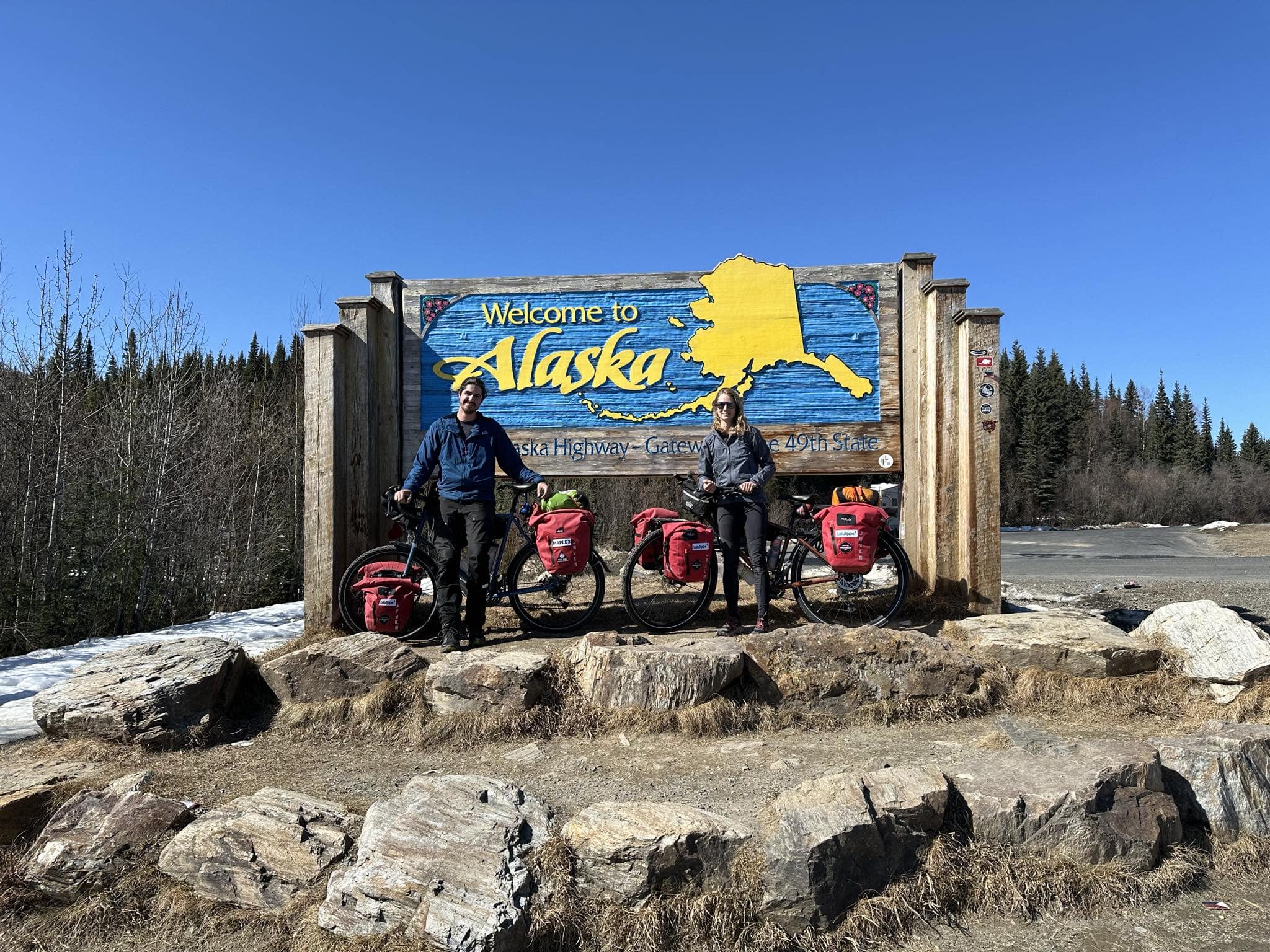
Nicolas Roulx and Catherine Chagnon have set off on their monster six-month, 6,500km west-to-east journey through Canada. The duo’s entire trip will take place north of the 60th parallel.
Chagnon and Roulx had planned to set off by bicycle from near Beaver Creek on the Alaska-Yukon border on April 18 but left a few days later on April 21. By May 1, they had covered 900km along the Alaska Highway. As the pair transition to the dirt Nahanni Range Road, their 120km per day pace may slow. Camping as they go, they’ve had good weather and encountered some wildlife, but no grizzlies.
The full 6,500km route. The section in red highlights the cycling segment. Photo: Expedition AKOR
They will ride the dirt road for around a week before reaching the village of Tungsten. Here, they will meet friends Mathieu Beland and Guillaume Moreau. The foursome will then begin the meaty 2,800km canoe section of their expedition on the Nahanni River.
Will it be warm enough to paddle?
It will be interesting to see how much paddling they manage on the lakes and rivers of the Northwest Territories. Much of the route could still be frozen, though Roulx told ExplorersWeb they did not expect it to be a major problem before setting off.
“It’s an El Nino year, so it should be a little warmer,” Roulx explained.
These opening few weeks are a vital warm-up for Roulx. He suffered a nasty accident not long after his 2021 Canada north-to-south expedition. He broke his leg while bouldering and has endured a long road to recovery. So far Roulx’s knee is holding up well, though he does report “suffering from some knee pain, but nothing serious or abnormal.”
Alaska
Bronson, LaFrance offer different views and priorities in Alaska Public Media-ADN mayoral runoff debate

Anchorage mayoral candidates Dave Bronson and Suzanne LaFrance faced off in a debate hosted by Alaska Public Media and the Anchorage Daily News Thursday night.
The two sparred over competing ideologies and priorities.
Bronson, the incumbent, made homelessness a centerpiece of his debate performance, mentioning his proposed East Anchorage homeless shelter in six different answers. The shelter was rejected by the Assembly after his administration broke city code by proceeding with construction without Assembly approval. He also described homelessness as a major driver of pedestrian deaths and high rates of violence against women.
“We need to protect these women by putting them into a shelter,” Bronson said. “And that’s why for three years, I’ve been trying to build a shelter. And somehow this shelter got political. I don’t know how, but at the end of the day, that’s the path forward.”
Meanwhile, former Assembly Chair Suzanne LaFrance focused on providing basic services during the debate. She said she’d prioritize local governance, rather than divisive state and national politics.
“We’ve got to get the basics right,” LaFrance said. “And right now, you know, we’ve got a APD staffing shortage of over 50 sworn officers. We don’t have a plan on homelessness. And we’ve got to figure out a way to plow our streets of snow in the winter.”
The moderators asked both candidates questions specifically tailored to them. Bronson was asked about comments he’d made at an Anchorage Chamber debate this week where he described himself as “normal”, and his opponent as “woke.”
Bronson described wokeness as a harmful left-wing platform.
“It’s a political ideology of the far left,” Bronson said. “I don’t think it’s healthy. I don’t think it reflects science. I don’t think it reflects, certainly, good public policy.”
Meanwhile, LaFrance was asked about concerns that she’s too closely aligned with the current Assembly. She said checks and balances would continue if she becomes mayor, and when she was on the Assembly, there were disagreements.
“That is exactly what I would expect as mayor from the Assembly,” LaFrance said. “Because you’ve got 12 different people who are working to do their best to stand up for their constituents. And there’s going to be some healthy disagreement.”
A poll of debate viewers and listeners found that about 90 percent had already decided who they would vote for, with about nine percent saying they were undecided and one percent saying they weren’t voting.
Ballots for the mail-in runoff election are due May 14.
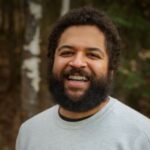
Alaska
Dunleavy says lawmakers shouldn't pass bills to address homeschool decision. Lawmakers say that's risky.
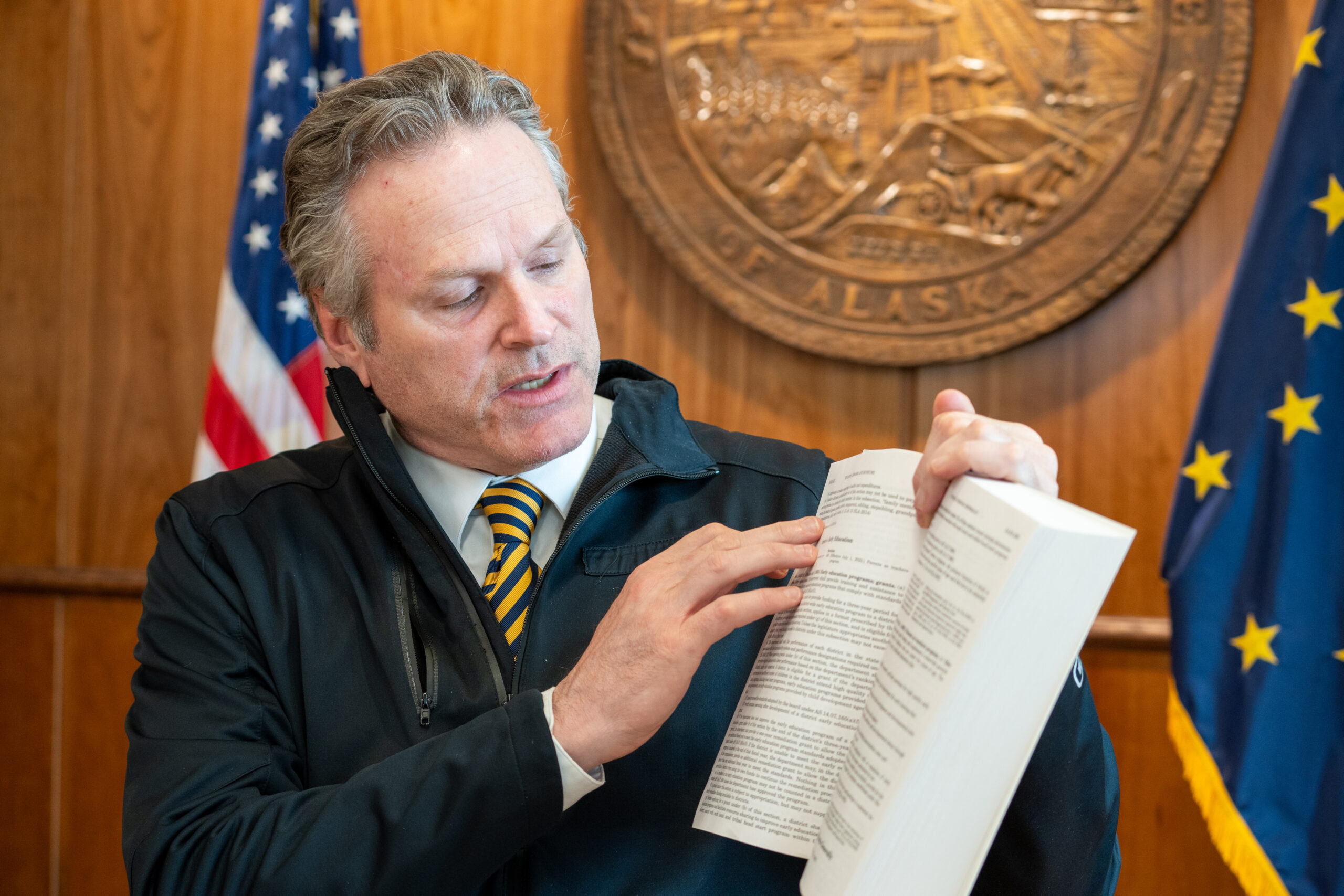
Gov. Mike Dunleavy is calling on lawmakers to pause their efforts to address a court ruling that threatens the state’s homeschool system, saying they should wait for a ruling from the Alaska Supreme Court.
“This is literally a disaster, potentially, an emergency because of its magnitude,” he told reporters at a news conference on Wednesday.
The decision from an Anchorage Superior Court judge found two laws underpinning much of Alaska’s homeschool system unconstitutional. Alaska’s Constitution prohibits spending public money “for the direct benefit of any religious or other private educational institution,” and Judge Adolf Zeman found that payments to homeschool families for things like books and lesson plans had been used for tuition at private and religious schools, which he declared unconstitutional.
But Department of Law Civil Division head Cori Mills, who appeared alongside Dunleavy on Wednesday, said the decision throws a lot more than homeschool spending into question.
“It’s difficult not to read the decision to say that any private organization is impacted,” she said. “So a private organization, in the court’s opinion, seems to equate to a private educational institution.”
And schools spend money on private organizations all the time — books from McGraw Hill, bussing from First Student, tutoring from Sylvan, the list goes on. The plaintiffs’ lawyer in the case, Scott Kendall, said the broad interpretation is “bizarre” and “misleading” and that Dunleavy should seek more guidance from the court. But Dunleavy insisted there’s not much choice but to wait for the Supreme Court to rule.
“This is why we’re saying a quick fix that some are advocating for, we don’t see how it fits into the ruling right now,” Dunleavy said.
But there’s still a big unanswered question: It’s not clear when or if the court’s ruling will take effect. It could be any day, or the end of June as the plaintiffs requested, or longer, as the state and parents backing the homeschool system have requested. And Dunleavy told reporters he’ll likely call lawmakers back to Juneau for a special session if the Alaska Supreme Court doesn’t allow the homeschool laws to stand.
But Sen. Bill Wielechowski, D-Anchorage, said that could be tough to pull off — this summer and fall is campaign season, and he said he’s not sure legislators would be able to get together. So he said he’s in favor of passing a law that puts guardrails on how homeschool funds are spent — or a regulatory fix from the Dunleavy administration that, according to the Legislature’s attorneys, would be compatible with the decision.
“If we put a statute in place, or quite frankly, if there are regulations put in place before that, then homeschoolers will have certainty. Correspondence school families will have certainty. They’ll know what the rules are,” he said. “I think if we don’t do that, this potentially creates tremendous uncertainty for families that use correspondence schools.”
The Senate Education Committee rolled out one possible approach in late April. The sponsor, Sen. Löki Tobin, D-Anchorage, says it’d restore components of the system that existed before the 2014 law that was declared unconstitutional.
The House Education Committee has its own version of a fix. It would more closely mirror the more recent homeschool system, but with stricter limits on buying things like ski passes, power tools and private school classes.
Education Committee co-chair Rep. Justin Ruffridge, R-Soldotna, called for an immediate legislative fix after the decision came out — and despite Dunleavy’s call to hold off, he says that’s still the plan.
“Well, I think if we say we can’t pass statutes to fix things, why would we ever pass a statute ever again?” Ruffridge said.
He said he agrees with Dunleavy that lawmakers have to think long-term. But he said passing a law clarifying the rules would be a good idea.
“We also have to take a view that says, ‘How do we bring stability to folks?’” Ruffridge said. “It’s a lot of people, 23,000 students, so I think we have an obligation to both.”
Doing nothing, Ruffridge and Wielechowski said, risks leaving homeschool families even more in limbo than they already are.
Eric Stone covers state government, tracking the Alaska Legislature, state policy and its impact on all Alaskans. Reach him at estone@alaskapublic.org.
-

 News1 week ago
News1 week agoLarry Webb’s deathbed confession solves 2000 cold case murder of Susan and Natasha Carter, 10, whose remains were found hours after he died
-

 News1 week ago
News1 week agoFirst cargo ship passes through new channel since Baltimore bridge collapse
-

 World1 week ago
World1 week agoHaiti Prime Minister Ariel Henry resigns, transitional council takes power
-

 World1 week ago
World1 week agoSpanish PM Pedro Sanchez suspends public duties to 'reflect'
-

 World1 week ago
World1 week agoUS secretly sent long-range ATACMS weapons to Ukraine
-

 News1 week ago
News1 week agoAmerican Airlines passenger alleges discrimination over use of first-class restroom
-

 Movie Reviews1 week ago
Movie Reviews1 week agoHumane (2024) – Movie Review
-

 Education1 week ago
Education1 week agoVideo: Johnson Condemns Pro-Palestinian Protests at Columbia University

/cloudfront-us-east-1.images.arcpublishing.com/gray/7CHNPVL2NBCHBH4RU4GOUJVNEQ.bmp)


